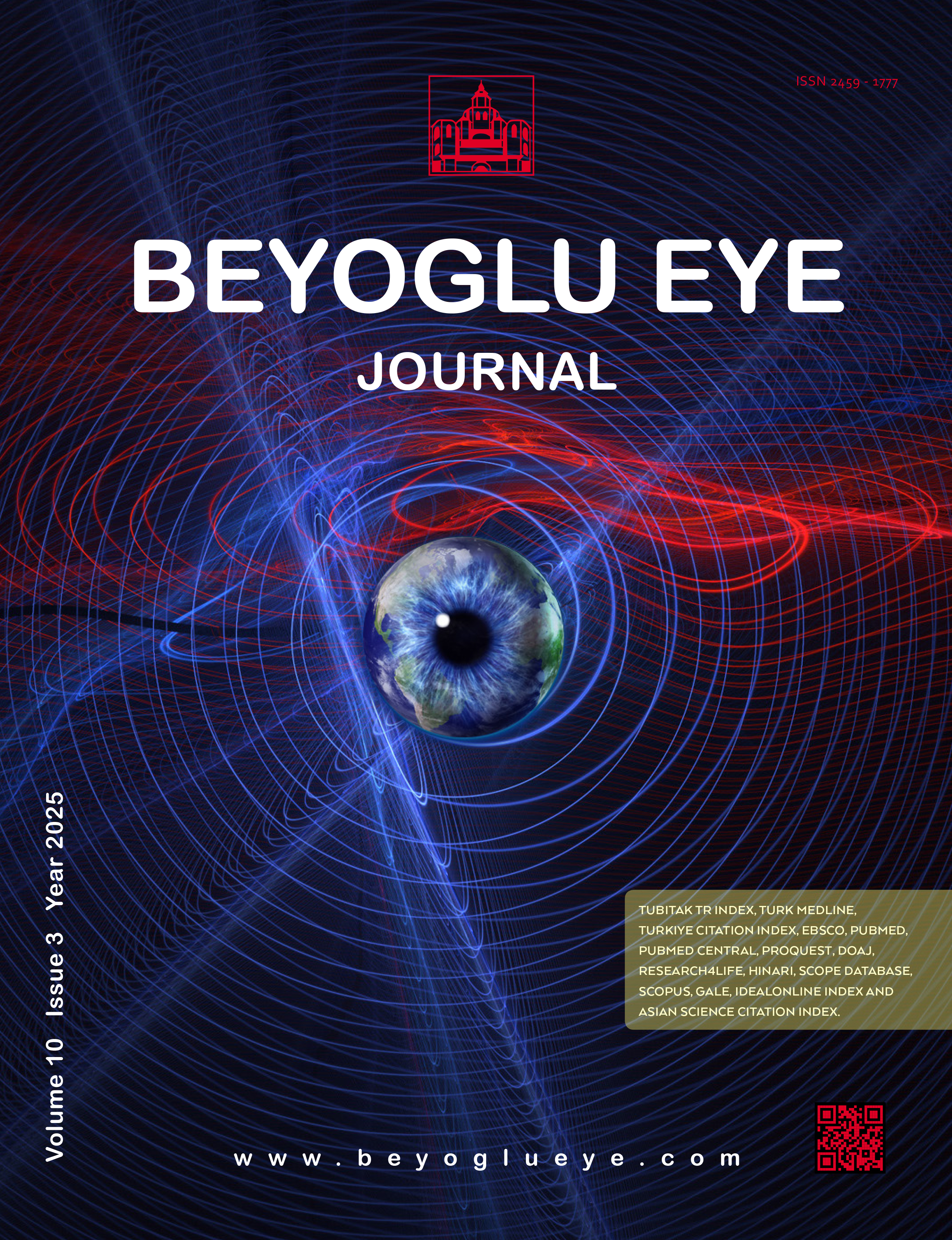
Factors Affecting Visual Function in Children with Cerebral Visual Impairment
Esra Sahli1, Pinar Bingol Kiziltunc2, Ozben Akinci Goktas3, Omer Bektas4, Sefay Aysun İdil11Department of Ophthalmology, Ankara University, Faculty of Medicine, Ankara, Türkiye2Ankara University, Graduate School of Health Sciences, Vision Artificial Vision and Rehabilitation of Low Vision Doctorate Program, Ankara, Türkiye
3Department of Pediatric Neurology, Ataturk Sanatoryum Training and Research Hospital, Ankara, Türkiye
4Department of Pediatric Neurology, Ankara University, Faculty of Medicine, Ankara, Türkiye
OBJECTIVES: To evaluate the visual functions and their correlation with the neurological status in children with cerebral visual impairment (CVI).
METHODS: Case records of children with CVI under 3 years of age at their first visit were reviewed. Childrens visual functions were scored between 0 and 15 based on fixation and following skills. The neuromotor assessment was conducted by the Hammersmith Infant Neurological Examination (HINE) tool.
RESULTS: A total of 233 children with CVI (122 male and 111 female) were identified. The median age was 13 months. The etiologies were hypoxic-ischemic encephalopathy (27.5%), prematurity (23.6%), structural abnormalities (24%), metabolic diseases and genetic syndromes (14.2%), and neuromotor retardation (10.7%). There was no difference in visual function score (VFS) among the etiological groups and the magnetic resonance imaging finding groups (p=0.162, p=0.205, respectively). The VFS values of children without seizures were significantly higher than those with seizures (p=0.003). There was a weak correlation between the HINE ratio and VFS (p<0.001, r=0.341).
DISCUSSION AND CONCLUSION: The visual functions of children with CVI are usually very poor. The visual functions of these children are related to their neurological and motor retardation levels, seizure states, and the presence of additional ocular problems.
Manuscript Language: English









